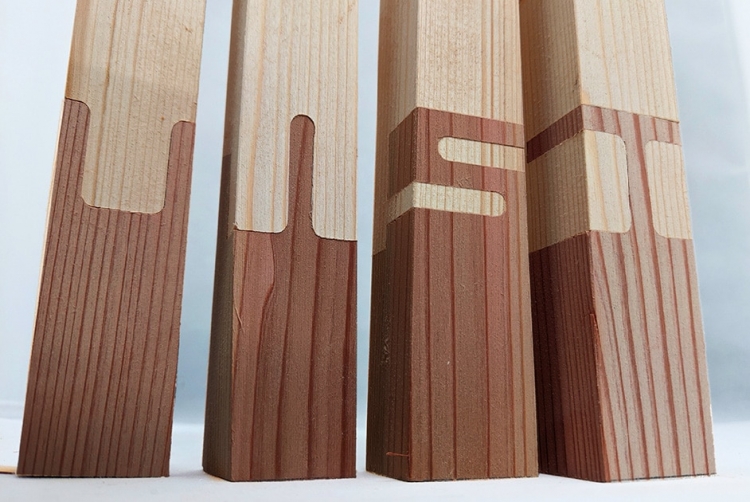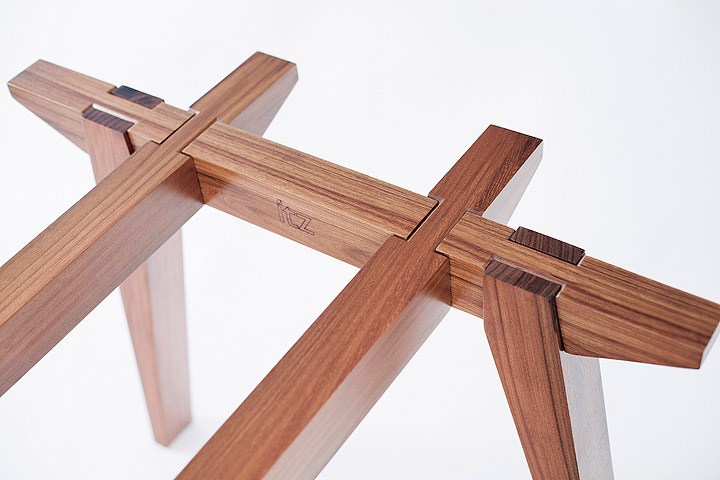Japanese Joinery. This isn't just for the sake of looks either, it has a much more practical usage. Japanese joinery is basically a technique for joining wood without using glue, nails, and screws.

In fact, some of these joints are so strong that once the pieces are joined, they cannot be taken apart by normal means. It blends traditional and modern elements, both in its design and construction. Joinery refers to both the wooden components of a building, and the techniques used for making those components.
Mortises or grooves called 'hozo' are carved into the wood in order to join two boards in a blind joint that's not visible from the surface. It's a strong, interesting joint that Andrew Hunter cuts by hand. 河合継手 Kawai-tsugite. Built with Zen in mind,this tea room was designed and built using traditional Japanese joinery and materials.
Special tools with special techniques are essential. Held together by nothing but tension and friction, each piece of wood interlocks with another like Jenga blocks. However, a look into this type of carpentry shows an amazing set of skills, tools, and traditions.
Joinery refers to both the wooden components of a building, and the techniques used for making those components.
Such unforgiving joinery is surely the truest test of woodworking skill: if you don't do it perfectly, down comes the temple. Hello Everybody,For this month, a lot of people who loved my previous videos have asked me to show them the skills of the great master wood Joinery. Skilled carpenters assemble them following the Kumiko method.
This involves first preparing the individual pieces, and then press-fitting them together after. Japanese woodworking and joinery is the wisdom of how to coax freewheeling solid wood, and make things as intended. Japanese joinery is probably one of the lesser-known art forms that came from Japan.
The woodworking technique [Kigoroshi] The woodworking technique of tapping and compressing the tenon when making a joint is called kigoroshi. The stiff-backed saws, known as douzuki (胴付き, lit. 'attached trunk') are typically used in cutting fine joinery. Some of the Japanese elements include: bamboo ceiling panels, Yukimi shoji screens (screens with a vertical viewing panel) anda traditional Japanese straw plaster (called Wara Juraku) which gave the walls a unique texture.
The saw teeth have no set to one or both sides to accomplish this feat. In fact, some of these joints are so strong that once the pieces are joined, they cannot be taken apart by normal means. Such unforgiving joinery is surely the truest test of woodworking skill: if you don't do it perfectly, down comes the temple.
Japanese joinery is basically a technique for joining wood without using glue, nails, and screws. Skilled carpenters assemble them following the Kumiko method. Traditional Japanese joinery itself is actually very practical at the same time as being ornate.
Japanese joinery is probably one of the lesser-known art forms that came from Japan.
Get Started with Japanese Joinery The kanawa tsugi, translated as a half-blind tenoned, dadoed, and rabbeted scarf joint, is used to splice two pieces of wood together end to end. However, a look into this type of carpentry shows an amazing set of skills, tools, and traditions. Skilled carpenters assemble them following the Kumiko method.
But it should be used with specific kinds of. Scribd is the world's largest social reading and publishing site. Abdiel Solid Wood Platform Bed. by Three Posts™ Baby & Kids.
Shoji Cabinet Plans Inspired by Traditional Japanese Furniture Here's a project to introduce you to Japanese joinery techniques inspired by a traditional Shoji screen. Some of the Japanese elements include: bamboo ceiling panels, Yukimi shoji screens (screens with a vertical viewing panel) anda traditional Japanese straw plaster (called Wara Juraku) which gave the walls a unique texture. Special tools with special techniques are essential.
This isn't just for the sake of looks either, it has a much more practical usage. Such unforgiving joinery is surely the truest test of woodworking skill: if you don't do it perfectly, down comes the temple. Get Started with Japanese Joinery The kanawa tsugi, translated as a half-blind tenoned, dadoed, and rabbeted scarf joint, is used to splice two pieces of wood together end to end.
Get Started with Japanese Joinery The kanawa tsugi, translated as a half-blind tenoned, dadoed, and rabbeted scarf joint, is used to splice two pieces of wood together end to end. The stiff-backed saws, known as douzuki (胴付き, lit. 'attached trunk') are typically used in cutting fine joinery. It's a strong, interesting joint that Andrew Hunter cuts by hand. 河合継手 Kawai-tsugite.
Special tools with special techniques are essential. Caveat Emptor: Japanese joinery is an incredibly difficult and high art, and unless you have significant wood working experience, and even then, it is no small task. Pieces attach by friction; thus, precise measuring, cutting, and planing are required.
Skilled carpenters assemble them following the Kumiko method. The saw teeth have no set to one or both sides to accomplish this feat. Making a Japanese joinery bed using Kumiko woodworking art.
Japanese woodworking uses only wood—no additional metal fasteners or glue.
Skilled carpenters assemble them following the Kumiko method.
The craftsperson who does this is often considered a joiner, as he or she is one who joins pieces of wood together to construct something. This philosophy is apparent in the ancient art of Japanese wood joinery, a traditional method of carpentry that produces durable furniture without the use of nails or screws. However, a look into this type of carpentry shows an amazing set of skills, tools, and traditions.
A traditional Japanese bed frame is an open rectangle, with cross slats and corner legs to support a Tatami bed mattress. Traditional Japanese joinery itself is actually very practical at the same time as being ornate. Japanese woodworking and joinery is the wisdom of how to coax freewheeling solid wood, and make things as intended.
Joints are often created by shaping the two pieces of wood so that they perfectly attach to each other. The craftsperson who does this is often considered a joiner, as he or she is one who joins pieces of wood together to construct something. Making a Japanese joinery bed using Kumiko woodworking art.
While building without the use of nails or other fasteners is not at all unique to Japan, the types of joints used, the durability of the structures created, and the complete absence of iron makes Japanese joinery stand out. Japanese woodworking and joinery is the wisdom of how to coax freewheeling solid wood, and make things as intended. It blends traditional and modern elements, both in its design and construction.










